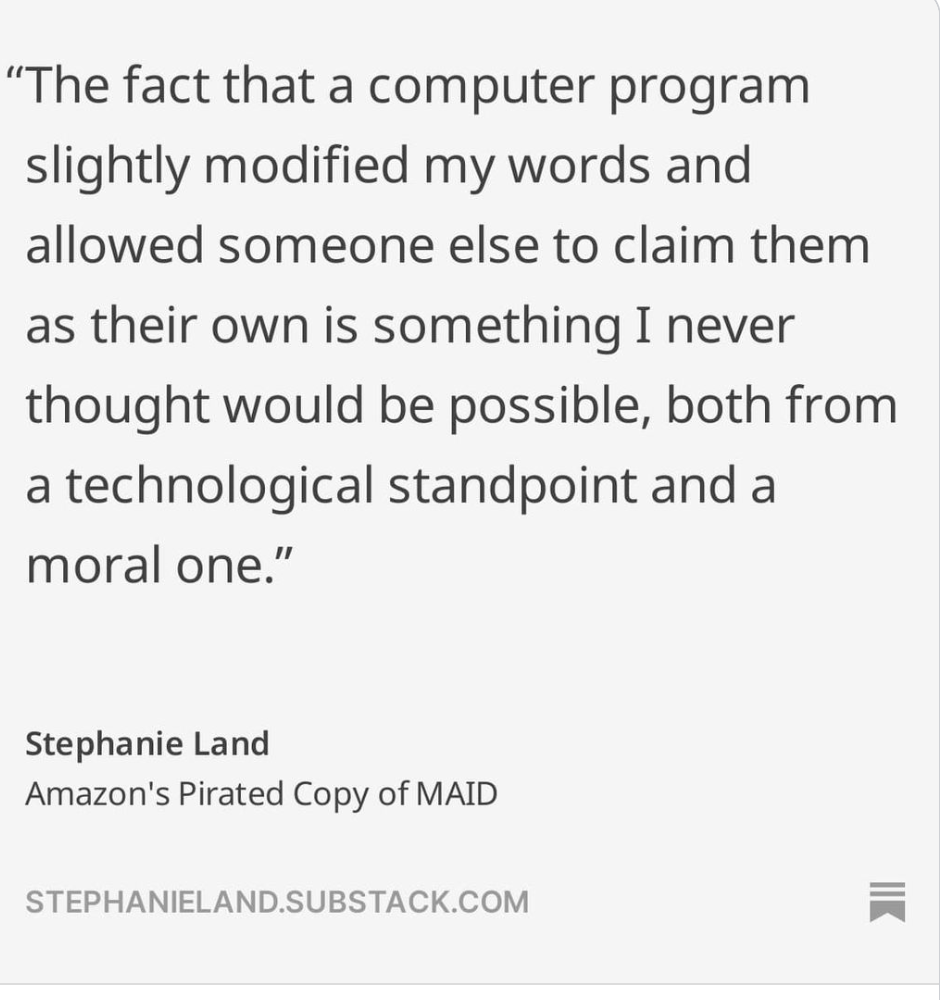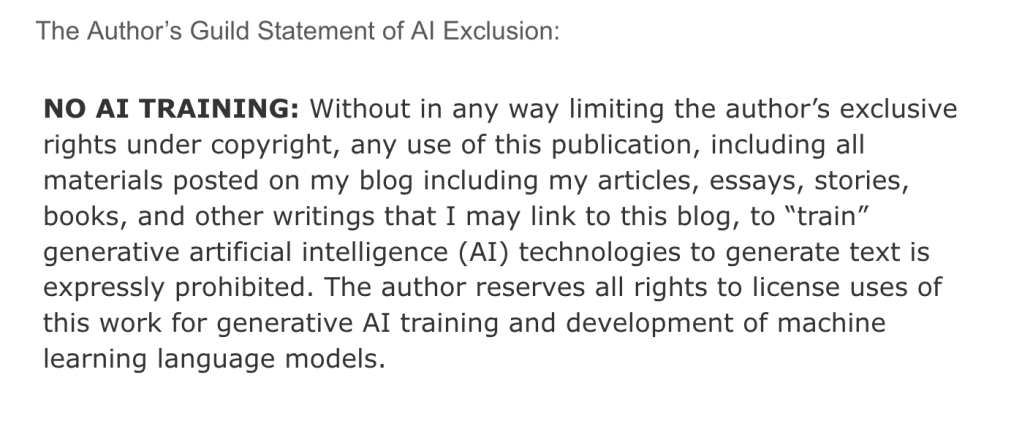By Brian Kaufman

Marketers quickly assimilate buzzwords associated with current trends. Think of how easily words like “green” and “sustainable” slip into everything from upscale automobiles to product packaging.
One new hot-button term that marketers have fallen in love with is AI—artificial intelligence.
The topic is worth discussing because, like it or not, technology has changed what was and what is to be.

I remember a seasoned writer friend who passionately advocated for the mechanical typewriter over the electric one.
Another acquaintance, an author of numerous books three decades ago, once declared that those who write on a computer will never make a mark in the publishing world.
These are perhaps the voices of those who resist change.
But I, for one, embrace innovative technology. I use three different editing programs, and I find them to be almost as effective as my critique groups.
I will start my rant by telling you what the current AI is not. It’s not intelligent (let alone sentient). It’s a computer technology that allows machines to change output based on new inputs.
These sophisticated algorithms farm data to discover patterns that create simulacrum based on those patterns.
The process is commonly called “machine learning.” Recent advancements use “deep learning,” a subset of machine learning based on linguistics and human brain structure. This is responsible for some recent AI advancements.
What can’t AI do?
- Understand abstractions.
- Understand context.
- Reason or intuition.
- Relate on an emotional level.
Translation—AI can’t think or create. It can analyze and copy.
AI systems digest massive amounts of data, looking for language (or image) patterns. It uses those patterns to mimic text, music, or graphic media.
For example, the OpenAI GPT-3 database boasts 45 terabytes (45,000 gigs) of data. 60 percent of that came from 13 years of web crawling. Books comprise at least 15 percent of the data (200,000 books), but OpenAI is very secretive about which books are selected.
Some—not all—are public domain. (It’s beyond the scope of this article to speculate on all the sources, and any guess I have would be just that—a guess.)
AI programs do more than just stockpile data. Censorship redactors make the text “palatable.” These “pre-ingestion scrubbers” remove medical and financial advice.
They also remove “microaggressions” and “conspiracy theories.” As for obscenities, the GitHub list of obscene language consists of 403 words or phrases. (I was pleased to see that “ball kicking” is forbidden. If there must be censorship, that’s an excellent place to start. However, I would point out that I know and use more than 403 bad words and phrases. Perhaps there’s an employment opportunity for me there.)
I note the use of the word scrubbing because it ties into my personal objections to AI. Coming soon, I promise.
Nine copyright infringement cases are already in the courts as the legal system tries to figure out how to return those demons to Pandora’s box. One case (Getty Images v Stability AI) is being tried in the High Court in London.
This is a very complex issue. Web crawlers. Web scrapers. Search engines. We have to know how to promote and expand our audience while protecting our IP from data mining. Yikes.
But let’s get specific about author applications.
It wasn’t long ago that writing software that helped a writer develop plots, genre beats, pacing and dialogue was all the rage. AutoCrit. Plottr. Wordtune.
Sudowrite is an AI tool for writers with an unusual boast: “Write a novel from start to finish. In a week.” (I’m quoting from their website.) If you use their story engine to write an outline, the program will write “1,000s of words, in your style.” (Their emphasis.) The software has an amusing name. (If you get it, it’s an Easter egg. If you don’t, it’s an insult.)
The software provides tools like describe (offering a selection of descriptions to click and add, targeting the senses of your choice) and expand (which fine-tunes your pacing by “magically” building on your scenes.)
It took me five years to write and edit my first published novel. Sucker.
The program can do this because it “has read a million stories and can read yours in 10 seconds.”
I have no doubt that this program and others like it (including those yet to come) can do what they claim. Soon, everyone’s book will sound the same and follow the same tropes, offending no one (except perhaps those conspiracy theorists or ball kickers).
As of last February, more than 200 books offered by Amazon listed AI as author or co-author. How many books are “AI-assisted” without proper attribution? How could anyone possibly know?

My objection? (Beyond copyright infringement, of course. See Jane Friedman and Stephanie Land) When everything is vanilla—generated directly from the aggregate writing database, scrubbed and stripped of offense, sharp edges, and art, how will readers know what creative art can do? I occasionally like some Mickey-Ds, but what will happen to that spicy Curry and Cajun cuisine if all food is modeled after the dollar menu? Would a reader, fed on AI, be able to recognize brilliant prose?
I’ll finish with a personal anecdote.
I write professionally for an online college. The company drew a hard line against AI for several reasons:
Students have been using AI to answer quiz questions and write short answers and essays, but our ethics guidelines forbid that for obvious reasons.
AI is being challenged in court, and decisions are pending.
If students can’t use AI, neither can a school’s curriculum department. This has become difficult. We have a stock photo license, but the image company’s data bank is overrun with AI images. In addition, accreditation standards forbid the use of AI (student ethics) while offering seminars on how to make the best use of AI. (That’s called a mixed message.) In short, the “experts” have no idea which way to turn.
There are checks and balances for contractors and students. We have AI programs that flag text as being written by AI. At work, some very specific marketing text was recently flagged for suspicious passages. Those passages did indeed show up in the AI database—material from our own company’s materials from a decade ago. Web crawling is a major data source, and our AI program decided, in essence, that only they should be able to plagiarize.
A cautionary tale for the Brave New World. Educate yourself. Stay abreast of new developments. Perhaps join The Author’s Guild a group dedicated to the advocacy for writers.
Practical Ways to Protect Your IP

Thanks for the insights and the links!
LikeLike